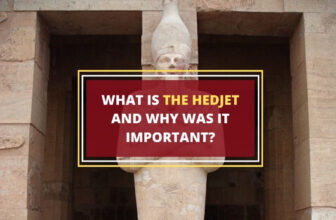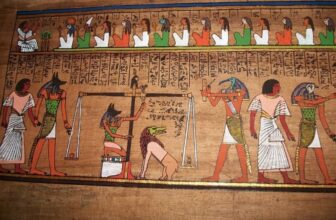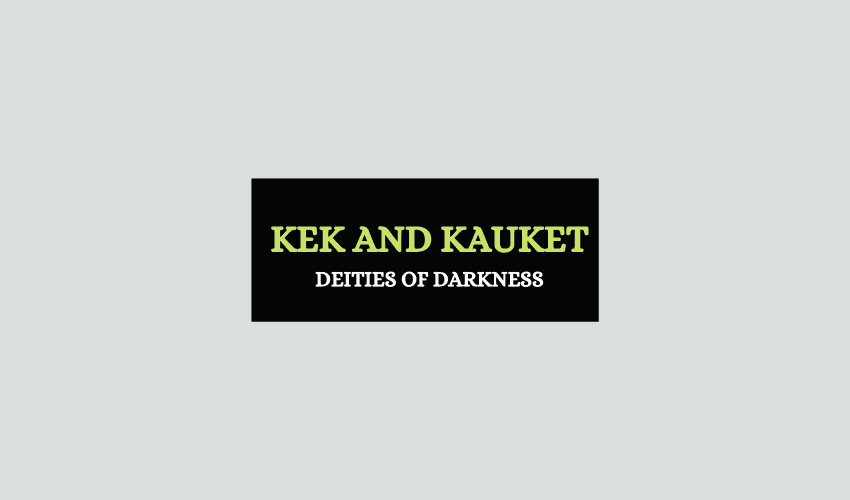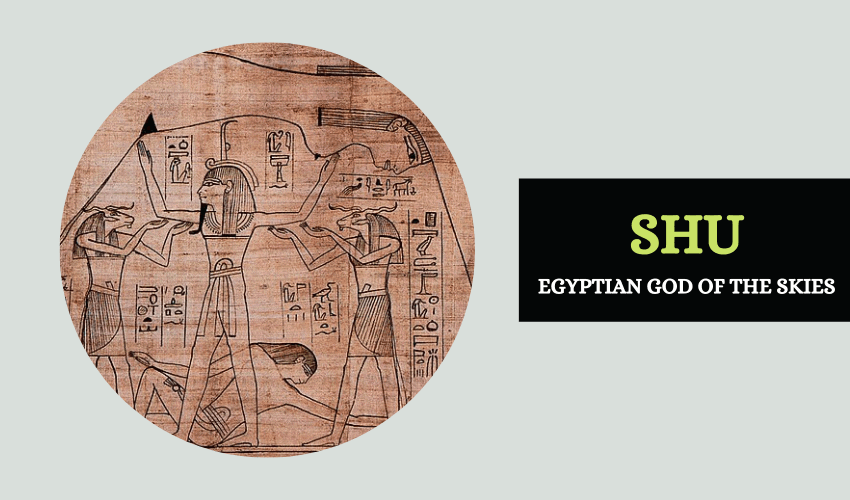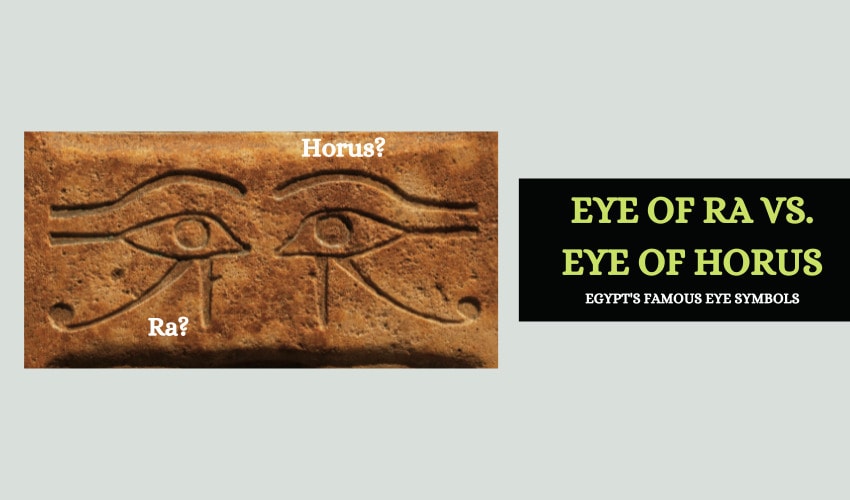
Egyptian mythology and hieroglyphics are full of fascinating symbols. Two of the most popular are the Eye of Ra and the Eye of Horus. Although they’re quite different in appearance and meaning, these two symbols are often mistaken and believed to be the same.
In this article, we’ll take a look at the Eye of Ra and the Eye of Horus, how they’re different and what they symbolize.
What is the Eye of Ra?
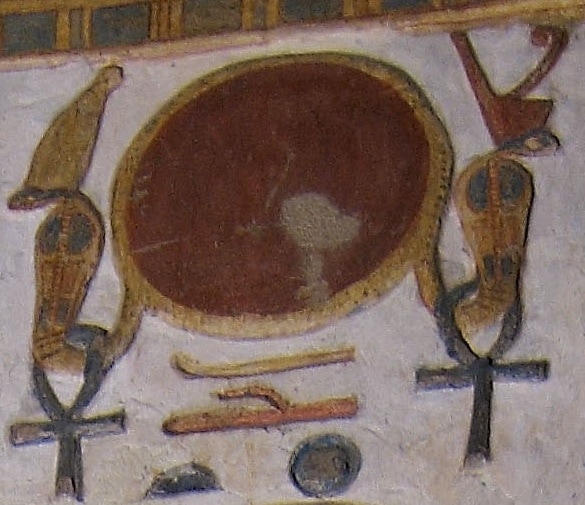
The first of the two symbols historically is the Eye of Ra. It emerged together with the cult of Ra after the unification of the Lower Egypt and Upper Egypt kingdoms.
The symbol had a pretty simple and recognizable design – a large bronze or golden disc with two rearing cobras on its sides. The disc represents the sun, that is, Ra.
The two cobras, on the other hand, come from an even older Egyptian symbol – the Uraeus royal cobra symbol of the Lower (northern) Egyptian Kingdom. There, the Uraeus cobra was the symbol of the king, often adorned upon the red Deshret crown of the ruler. The Uraeus was also connected to the ancient goddess Wadjet – the patron deity of Lower Egypt before the unification and the spread of the cult of Ra.
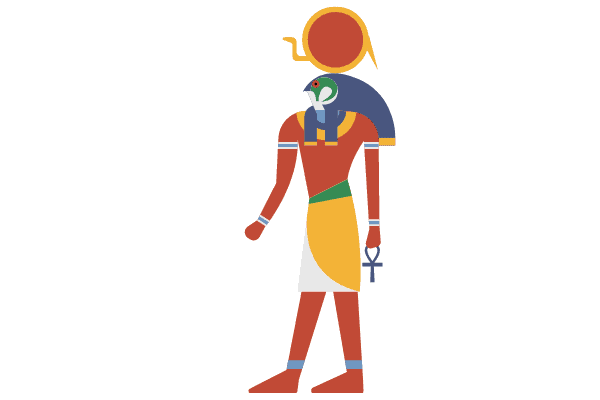
Similarly, the Upper (southern) Egyptian Kingdom had its own patron goddess, the vulture goddess Nekhbet. Like Wadjet, Nekhbet also had its special headdress – the Hedjet white vulture crown. And while both the white Hedjet crown and the red Deshret crown were combined into the one the pharaohs of unified Egypt wore, only Wadjet’s Uraeus cobra made it into the Eye of Ra symbol.
Now that we know what the components of the Eye of Ra are, however, let’s examine its actual symbolism.
Curiously, the Eye of Ra was not just seen as the literal eye of the god. Instead, it was viewed both as the sun itself and as a weapon that Ra could wield against his enemies. What’s more, the Eye was also a deity of sorts too. It – or, rather, she – had a feminine nature and was seen as the female counterpart of Ra. Unlike the generally good and kind god, however, the Eye of Ra had a fierce and wrathful nature, as you’d expect from a “weapon”.
As a deity, the Eye of Ra was often associated with various popular female deities in Egyptian mythology such as Hathor, Bastet, Sekhmet, and – most commonly, because of the two Uraeus cobras – Wadjet herself. In that way, Wadjet was believed to live on as a part of Ra or as its consort or counterpart and not just his weapon. That is also why the Eye of Ra is often called “The Wadjet”.
The symbol was so popular in its time that Egyptian pharaohs would often wear it – or be portrayed wearing it – on their crowns. That would symbolize them wielding the supreme power of Ra, whose demigod emissary on Earth the pharaoh was supposed to be.
As a final interesting note that connects the Eye of Ra to the Upper and Lower Egyptian Kingdoms, the two Uraeus cobras on the Eye were often portrayed with crowns of their own – one wearing the red Deshret crown and one wearing the white Hedjet crown.
And yet, that may not be the “Eye of Ra” you are familiar with. And there is indeed another design people often associate with the Eye of Ra. To explore it, however, will first need to look into the Eye of Horus.
What is the Eye of Horus?
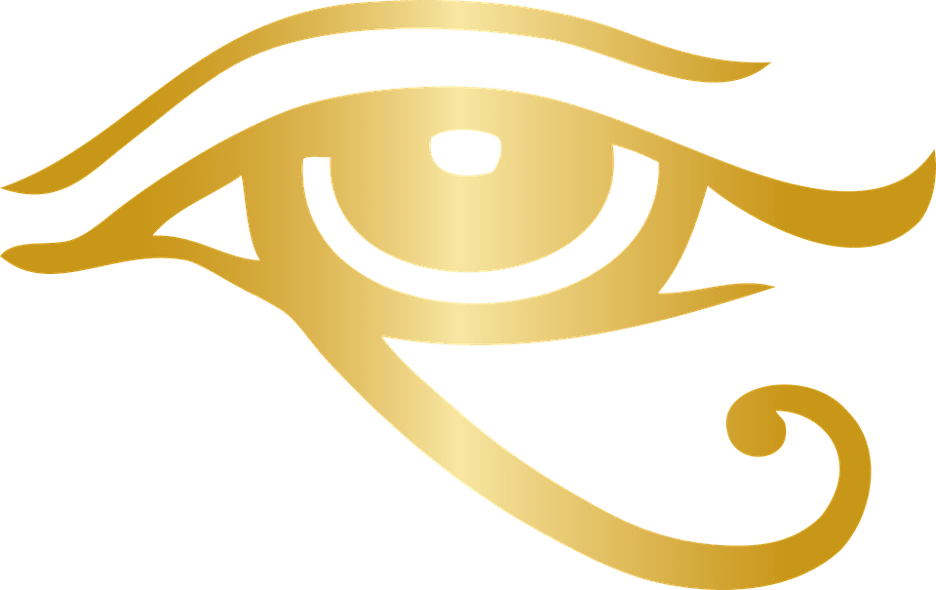
This is a symbol related to a god from an entirely different pantheon to that of Ra. The falcon god Horus, son to Osiris and Isis, and a nephew to Seth and Nephthys, is a member of the Ennead, a group of nine main divinities worshipped in the city of Helipolis. As the cult of Ra fell out of favor in broader Egypt, however, the cult of the Ennead spread, and with it – the many myths of the gods of this pantheon.
The key myth of the Ennead is that of the death, resurrection, and second death of Osiris at the hands of his brother Seth, the subsequent birth of Horus, and his vengeful war against Seth for the murder of Osiris. This myth includes the creation of the Eye of Horus.
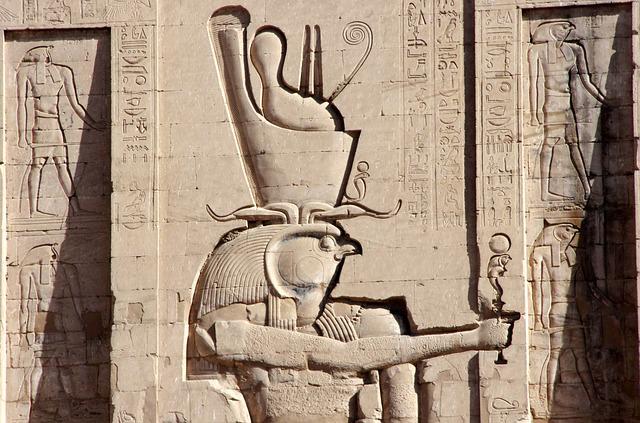
According to the Ennead legend, Horus fought many battles against Seth, winning some and losing others. In one such battle, Horus removed Seth’s testicles, while in another Seth managed to gouge out Horus’ eye, shatter it into six pieces, and scatter them across the land.
Fortunately, the Eye was eventually pieced back together and restored either by the god Thoth or the goddess Hathor, depending on the account of the myth.
Visually, the Eye of Horus looks nothing like the Eye of Ra. Instead, it looks like a simple yet stylistic drawing of an actual human eye. And that’s exactly what it is.
The Eye of Horus is always depicted in the same fashion – a wide eye with two pointy ends, a black pupil in the middle, an eyebrow above it, and two specific squiggles under it – one shaped like a hook or a stalk and one like a long tail ending with a spiral.
Neither of those components of the Eye of Horus is accidental. For one thing, you will notice that there are a total of six components – pupil, eyebrow, two corners of the eye, and two squiggles under it. Those are the six pieces Seth shattered Horus’ eye into.
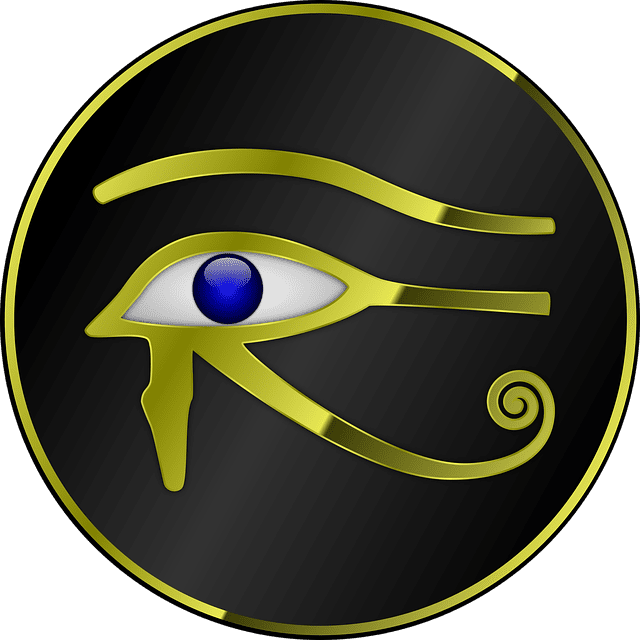
Additionally, each piece was used to represent different things to the Ancient Egyptians:
- Each piece symbolized a mathematical fraction and a unit of measurement:
- The left side was ½
- The right side was 1/16
- The pupil was ¼
- The eyebrow was 1/8
- The stalk was 1/64
- The curved tail was 1/32.
You will notice that if you add all those up, they amount to 63/64, symbolizing that the Eye of Horus will never be 100% complete even after it has been put back together.
- The six parts of the Eye of Horus also symbolize the six senses human beings could experience – the eyebrow was thought, the curved tail was taste, the hook or stalk was touch, the pupil was eyesight, the left corner was hearing, and the right corner was the sense of smell.
More importantly, however, the Eye of Horus represents the unity of mind and the unity of being. It also represents healing and rebirth as that’s what it went through.
With all those beautiful meanings behind it, it is no surprise that the Eye of Horus is one of the most popular and beloved symbols in Ancient Egypt. People used to depict it almost anywhere, from tombs and monuments to personal trinkets and as protective signs on small objects.
The Wadjet Connection
As we have seen before, the Eye of Horus symbol was sometimes referred to as “the Wadjet eye”. This is not an accident or a mistake. The Eye of Horus was called the Wadjet eye, not because Horus and the goddess Wadjet were connected in any direct way. Instead, because the Eye of Horus symbolized healing and rebirth, and because those concepts were also associated with the ancient goddess Wadjet, the two became conflated.
This is a neat coincidence as the Eye of Ra is also seen as a variation of the goddess Wadjet and the female counterpart of the sun god Ra. This connection has nothing to with healing, however, but is instead connected to the Uraeus cobras to the sides of the sun disk and to the wrathful nature of Wadjet.
The Eye of Ra Portrayed as A Reverse Eye of Horus
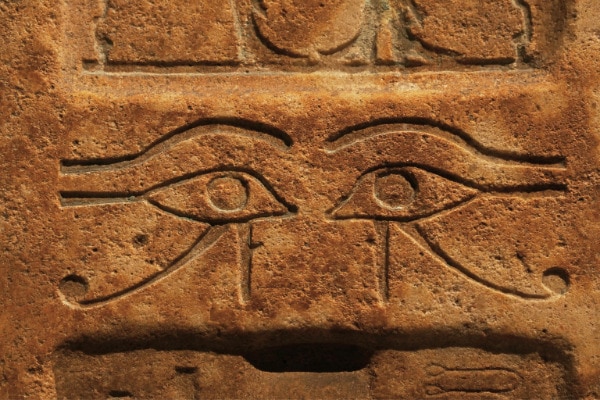
A common illustration often associated with the Eye of Ra is that of a mirrored Eye of Horus. This is not due to confusion among modern historians. Instead, that is how the symbol evolved to look in Egypt’s later periods.
As Horus and his Ennead rose to widespread worship after the cult of Ra, so too did the Eye of Horus rise to popularity. And as the Eye of Horus became a hugely popular symbol, the Eye of Ra began to change in it’s depiction too.
The connection was quite seamless despite the two gods not having anything in common at first.
Not only were both eyes often called “The Wadjet” but the Eye of Horus was also seen as a symbol connected to the moon, while the Eye of Ra obviously symbolized the sun. This is despite Horus being a “falcon god” and not having anything to do with the moon directly. Instead, as some myths had the moon god Thoth be the one to heal Horus’ eye, that was enough for many to view Horus’ eye as tied to the moon.
And, given that both Horus and Ra were leaders of the wide Egyptian pantheon at different times, their two eyes – the “sun eye” and the “moon eye” – were depicted together. In that sense, that new “Eye of Ra” was seen as the right counterpart to Horus’ left eye.
Such switches are quite common for long-lasting ancient mythologies like that of Egypt. As different cults and pantheons rise from different cities and areas, they eventually get blended together. Such was the case everywhere around the world – the Maya and Aztecs in Mesoamerica, the Assyrians and Babylonians in Mesopotamia, Shinto and Buddhism in Japan, and so on.
That is why the goddess Hathor exists in different ways in a few Egyptian cosmogenies and is shown as connected to both Ra and Horus – she just had different interpretations throughout history.
Such was the case with Wadjet and many other deities too, and the same happened to Horus. He was first a falcon god, son of Osiris and Isis. He then became loosely associated with the moon after Thoth healed his eye, and he later was associated with the sun when he rose to be Egypt’s supreme deity for the time.
What made things even more convoluted was that Ra later returned to prominence as Egypt’s chief deity for a time, when the Thebes-based cult of Amun Ra replaced the Heliopolis-based cult of Horus and the Ennead. The ancient sun god Ra was, in this case, combined with the god Amun to create a new supreme solar god of Egypt. However, as the Eye of Ra symbol had already been depicted as a reversed Eye of Horus, it continued in that way.
How Important Were Both Symbols to The Ancient Egyptians?
Both the Eye of Horus and the Eye of Ra were arguably the most – or two of the most – important symbols of their time. The Eye of Ra was worn on the crowns of pharaohs to symbolize their divine power while the Eye of Horus is one of the most positive and beloved symbols of all of ancient Egypt’s history.
That is why it is barely surprising that both symbols have survived to this day and are well-known to historians and fans of Egyptian mythology. It is also far from surprising why the two eyes keep getting confused with each other as one of them was literally re-drawn to resemble the other at one point.




